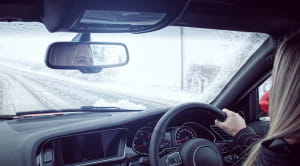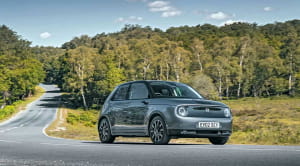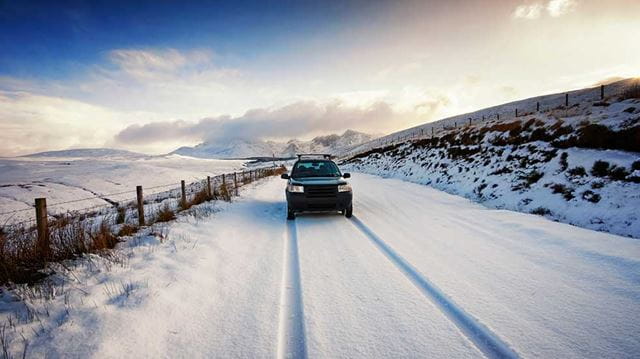
In the second part of our series, we focus on how you can adapt your driving to minimise your risk of being involved in an accident
With winter approaching, knowing how to drive safely in snowy, icy, wet and foggy conditions is absolutely paramount.
We previously published an article, How to prepare your car for driving in wintry conditions, detailing the safety checks you need to make, and what you need to carry with you in your vehicle, when travelling during the colder months.
This page will include the following advice (as well as much more):
• how to avoid skidding on ice and what you should do if you do start to skid
• the correct distance you should leave between your vehicle and the one in front
• when to switch your fog lights on
• the maximum speed you should drive in adverse weather conditions
1. Pull away in second gear
If the roads are slippery, trying to pull away in first gear could cause you to wheelspin, which will not only hamper your progress, it might also lead to you losing control of the vehicle. Selecting second gear, and then easing your foot off the clutch, should enable you to drive away without any issues.
2. Go easy on the brakes
Even in good weather, constantly slamming your foot on the brake pedal isn't advised, as it'll eventually cause your brakes to overheat, reducing their shelf life. But it's especially important to avoid this in freezing conditions, as sudden braking could easily cause you to skid or slide.
• Stay fit and healthy over the winter with our 10 essential tips
3. Drive in a higher gear on icy roads
Another way to reduce the chance of skidding on icy roads is to drive in a higher gear where possible. As the RAC explains in this winter driving article, this will help to manage your vehicle's engine power delivery, making it easier to find traction.
4. Drive smoothly
As well as going easy on the brakes (see point 2), generally avoid driving to extremes – don't hammer the accelerator, steer suddenly or change gears like a Formula One racer. These things should be avoided at the best of times, but especially in winter when you'll be presented with a lot more hazards.
5. Know what to do if you skid
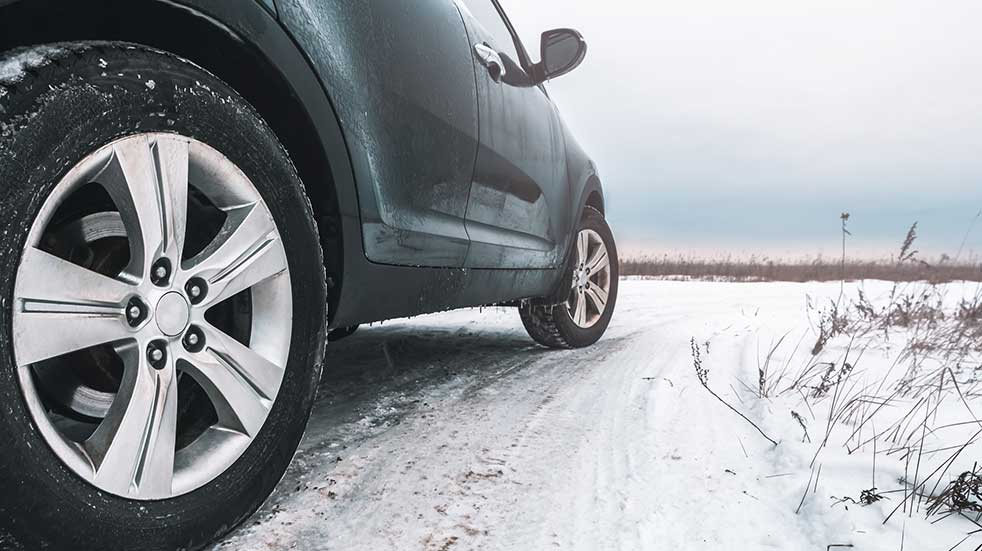
If you do happen to find yourself skidding, you'll be tempted to slam on the brakes. Don't do that. Instead, ease off the gas and, if it's a real-wheel skid, turn your steering wheel in the same direction as your car is sliding. If it's a front-wheel skid, aim to reduce your steering angle. This will help your front wheels to regain traction.
6. Keep your speed down
This might seem like an obvious one, but you'd be surprised at how many people drive right up to the maximum legal speed limit even in bleak weather conditions. To reduce your risk of being involved in an accident, you should aim to reduce your speed by a third on wet roads, and by a half (or more) when driving on snowy roads.
To further improve your safety when driving on snowy roads, consider a pair of snow tyre socks. Available from AutoSock Direct, they're quick and easy to fit, and offer amazing traction in wintry conditions.
7. Stay back
During the winter, leaving plenty of space between your car and the vehicle in front is even more important than usual, as stopping distances are greatly increased in slippery conditions. According to this road safety article by Top Tests, they can be twice as long on wet roads and up to ten times longer when driving on snow or ice.
8. Keep a constant speed when driving uphill
Climbing hills can be tricky in wintry conditions. If you're able to, accelerate as you approach the hill in order to summon up the power you need to ascend it. And once you're on the hill, maintain a constant speed – slowing down could make you lose your momentum, while speeding up could cause you to lose grip.
• Five established travel writers reveal their favourite winter getaways
9. Stick to main roads where possible
You might fancy yourself as a Black Cab driver with your impressive knowledge of the shortcuts in your local area. But you certainly won't be saving any time if you get stuck down some country lane in the snow, unable to budge. To avoid any mishaps, keep to the major routes and roads that have been gritted. You might get stuck in traffic, but you'll probably still get to your destination quicker.
10. Make sure you're visible in fog
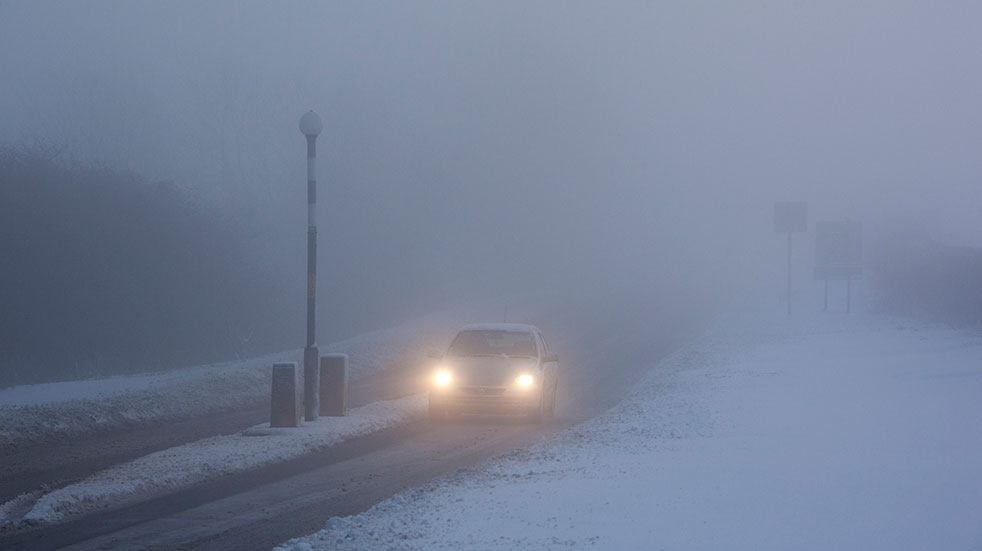
It's important for other drivers, and also cyclists and pedestrians, to be able to see your vehicle in thick fog – so remember to use your fog lights. According to the RAC's tips for driving in fog, the best time to activate your fog lights is when your visibility is reduced to 100 metres or less.
11. Avoid navigating by the car in front's tail-lights
When faced with a thick sheet of fog, the automatic response for many drivers is to blindly pursue the tail-lights of the vehicle up ahead. The danger with that is that you can't possibly know if the driver in question is practising good road safety, meaning you could be endangering yourself by following their lead.
12. Listen out for potential hazards
When your visibility is poor – for example, when it's foggy – you'll need to rely on your hearing a lot more to help you identify possible problems. Turning your car stereo down will enable you to hear traffic better – and if you can barely hear the road surface, be careful as it might mean you're driving on ice.
• Get your home ready for winter with the help of Channel 4 DIY expert Jo Behari
13. Avoid staring at oncoming traffic
With the nights getting longer, you could find yourself driving in the dark a lot more – and that means you'll be faced with a lot of oncoming headlights. To avoid the glare, which will lead to tiredness, the RAC's advice on driving in the dark suggests instead looking to the left-hand side of the road and following the white line that marks the edge. Should the glare ever become too much, reduce your speed.
14. Store Christmas presents somewhere safe
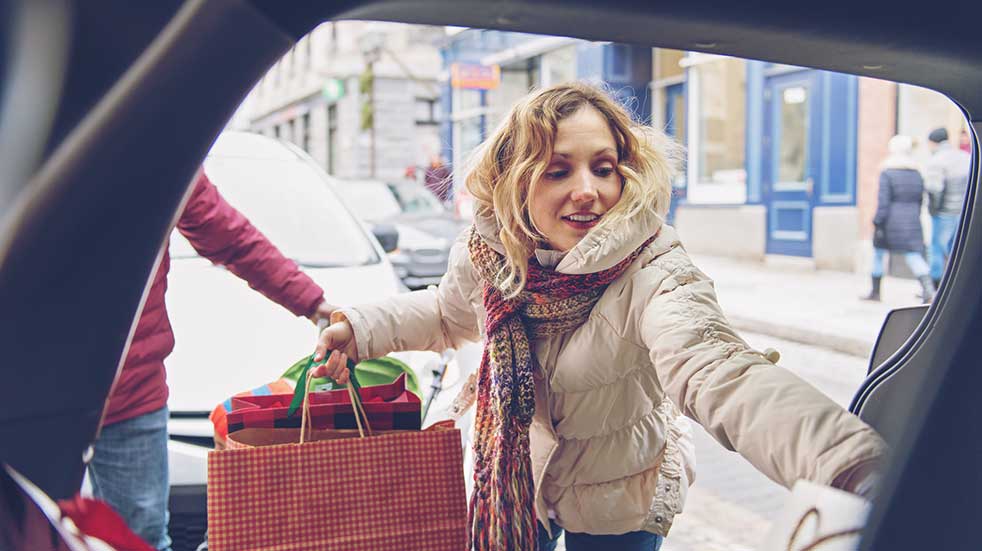
If you're heading home from a bumper Christmas shop, avoid piling your purchases up on the back seat. As well as potentially blocking what you can see in your rear-view mirror, they could prove deadly in the event of a crash. Store them in the boot if you have one – that'll also keep them out of the way of prying eyes.
15. Be extra-careful over the festive season
Drink-driving may be dangerous and illegal, but that won't stop some people from climbing behind the wheel after they've necked a festive tipple or three. So if you're out and about on the roads, you're advised to be vigilant. If you see anyone driving erratically, keep your distance – and report them if you think they may be drunk.
16. Only drive if it's really necessary
For large parts of this year, the government has been urging people to avoid travel unless absolutely necessary due to the coronavirus. Well, during the winter we'll have the coronavirus and the bad weather to contend with – so even more reason to keep car journeys to a minimum. Anyway, it's much cosier staying indoors...
Save money on your winter car preparations
Through Boundless's partners, you can get discounts on all kinds of motoring services to help you prepare for every eventuality this winter. Click here to find out more about Boundless motoring discounts.
Photos: Getty Images


